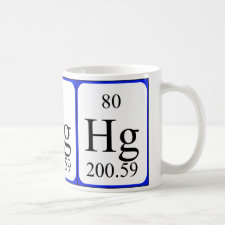
Authors: Zhang Z, Li JH, Song XL, Ma JP, Chen LX
Article Title: Hg2+ ion-imprinted polymers sorbents based on dithizone-Hg2+ chelation for mercury speciation analysis in environmental and biological samples.
Publication date: 2014
Journal: RSC Advances
Volume: 4
Issue: (87)
Page numbers: 46444-46453.
DOI: 10.1039/C4RA08163C
Abstract: For mercury speciation analysis in environmental and biological samples, novel Hg2+ ion-imprinted polymers (IIPs) were synthesized by a sol-gel process using the chelating agent dithizone, and then dithizone-Hg2+ chelate as a template and 3-aminopropyltriethoxysilane as a functional monomer, followed by solid-phase extraction (SPE) and atomic fluorescence spectroscopy (AFS) detection. The resultant Hg-IIPs offered high binding capacity, fast kinetics, and their adsorption processes followed a Langmuir isotherm and pseudo-second-order kinetic models. The IIPs displayed excellent selectivity toward Hg2+ over its organic forms and other metal ions with selectivity factors of 19-34, as well as high anti-interference ability for Hg2+ confronting with common coexistent ions. Through 10 adsorption-desorption cycles, the IIPs showed a good reusability with a relative standard deviation within 5%. Moreover, because of the chelation of dithizone, the IIPs could readily discriminate Hg2+ from organic mercury. Thus, mercury speciation analysis could be attained by using IIPs-SPE-AFS, presenting high detectability of up to 0.015 μg L-1 for Hg2+ and 0.02 μg L-1 for organic mercury. This method was validated by using two certified reference materials with very consistent results. Satisfactory recoveries ranging from 93.0-105.2% were attained for spiked seawater and lake water samples with three concentration levels of Hg2+. Furthermore, the analytical results for the spiked mercury species in real biological samples, such as human hair and fish meat, confirmed that the methods are practically applicable to speciation analysis. The IIPs-SPE-AFS demonstrated significant application perspectives for rapid and high-effective cleanup, enrichment and determination of trace mercury species in complicated matrices
Template and target information: mercury ion, Hg(II)



Join the Society for Molecular Imprinting

New items RSS feed
Sign-up for e-mail updates:
Choose between receiving an occasional newsletter or more frequent e-mail alerts.
Click here to go to the sign-up page.
Is your name elemental or peptidic? Enter your name and find out by clicking either of the buttons below!
Other products you may like:
 MIPdatabase
MIPdatabase









